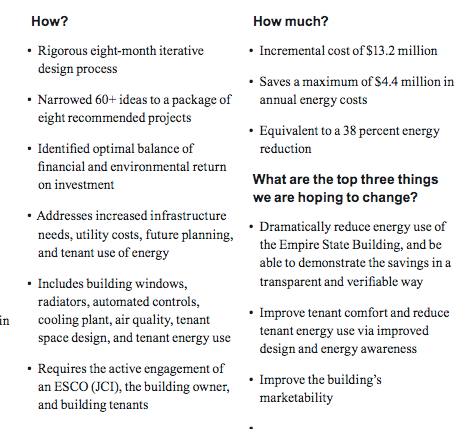Empire State Building-Energy Retrofit
How we make and use energy will pretty much determine our collective future.

For many building owners, capital costs are a barrier to investing in building retrofits. Using energy performance contracting (EPC), a building retrofit generates guaranteed energy savings that, over a number of years, can be equal to the cost of the project including financing costs. Typically, owners can keep these savings or apply them toward the debt repayment on the project.
The work includes several types of energy efficiency technologies including high-efficiency window glass replacement, redesigned heating and cooling systems and controls, lighting improvements, and radiative barriers. The project also incorporates behavior changes including management and operations updates and tenant engagement. Together these steps cost-effectively could reduce energy use by 38 percent and save 105,000 metric tons of greenhouse gas emissions over the next 15 years.



0 Comments
Recommended Comments